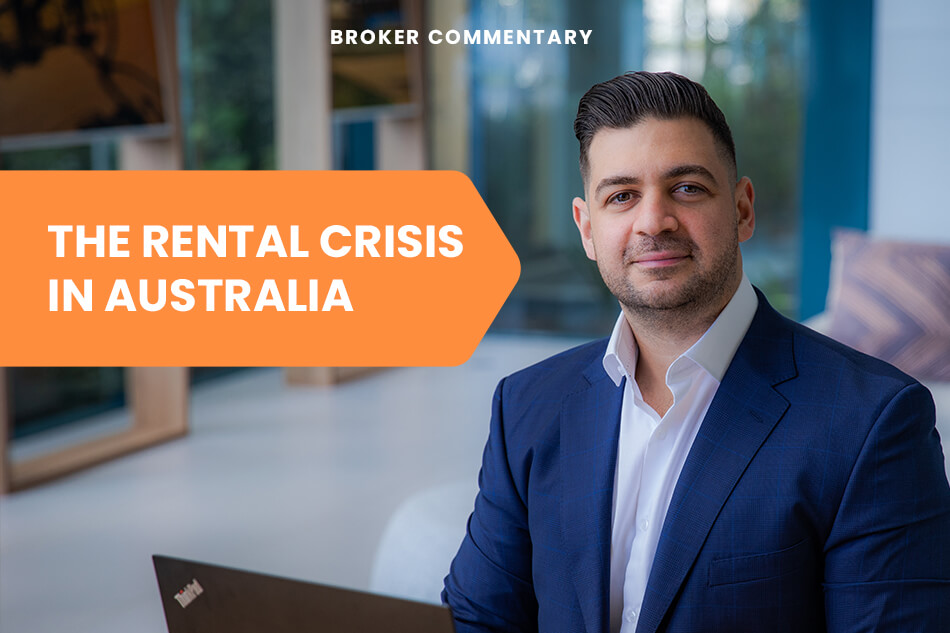According to CoreLogic data, rents have risen a record-breaking 22.2% since September 2020. While tight vacancy rates continue to grip our cities and regional areas, many renters face being priced out of the market or forced to move.
Why is there a rental crisis in Australia?
A combination of high demand for housing and a lack of supply mixed with population growth and declining homeownership rates are all contributing to the rental crisis. Post-pandemic and the return of foreign workers and students are driving competition and soaring rental prices. As a result, affordable housing has become near impossible for low-income families, pushing many would-be renters into homelessness.
What is the impact on renters, home buyers, and investors?
The impact on renters and potential buyers is significant. For renters, there is increased competition for any rental stock that may be available. This is putting further pressure on rents, causing bidding wars in heated sections of the market and financial and emotional stress. Many renters are experiencing insecurity surrounding their existing tenure and the risk of eviction.
For buyers, housing prices are still inaccessible for many, especially with expected interest rate hikes on the horizon. This means buyers need more time to save for a larger deposit.
What do industry reports and data tell us about the rental crisis?
CoreLogic data suggests rent value growth is slowing since its peak of 3% in May, to 2% for the month of December. Vacancy rates are showing small signs of growth, up to 1.17% in December from a low of 1.05% in November.
Head of research Eliza Owen says it, “Could be a sign that the rental market is starting to shift, [but] it’s not great news for tenants just yet.”
Is there a way to ease the ongoing rental crisis?
To ease the situation, there are several potential solutions the government needs to implement. Firstly, more stock on the market is essential. This can be initiated with programs that incentivise developers to build more rental properties, as well as softening regulations that limit the construction of new homes.
Policies that prioritise home ownership through changes to legislation that make it faster and easier to buy a home are essential. Tax incentives for landlords and an increase in social housing would counteract the current rental crisis in Australia, while strong rental control reform across the country would ease financial strain for renters and put an end to bidding wars.
What’s the outlook for 2023?
According to Ms. Owen, we can expect a seasonal uplift in new listings for the year’s first quarter, providing some renters with relief. While the rental market is still uncertain for 2023, it’s likely to remain tight. All will depend on the economic conditions, the influence of population growth, interest rate activity, and government policies implemented.
If you’re ready to escape the uncertainty of a heated rental market and buy your first home or want to expand your property portfolio to take advantage of solid income potential, speak to our team of home loan experts in Sydney.
Get the latest news and updates from Lendstreet
Join and subscribe to our newsletter.
Subscribe Now






According to CoreLogic data, rents have risen a record-breaking 22.2% since September 2020. While tight vacancy rates continue to grip our cities and regional areas, many renters face being priced out of the market or forced to move.
Why is there a rental crisis in Australia?
A combination of high demand for housing and a lack of supply mixed with population growth and declining homeownership rates are all contributing to the rental crisis. Post-pandemic and the return of foreign workers and students are driving competition and soaring rental prices. As a result, affordable housing has become near impossible for low-income families, pushing many would-be renters into homelessness.
What is the impact on renters, home buyers, and investors?
The impact on renters and potential buyers is significant. For renters, there is increased competition for any rental stock that may be available. This is putting further pressure on rents, causing bidding wars in heated sections of the market and financial and emotional stress. Many renters are experiencing insecurity surrounding their existing tenure and the risk of eviction.
For buyers, housing prices are still inaccessible for many, especially with expected interest rate hikes on the horizon. This means buyers need more time to save for a larger deposit.
What do industry reports and data tell us about the rental crisis?
CoreLogic data suggests rent value growth is slowing since its peak of 3% in May, to 2% for the month of December. Vacancy rates are showing small signs of growth, up to 1.17% in December from a low of 1.05% in November.
Head of research Eliza Owen says it, “Could be a sign that the rental market is starting to shift, [but] it’s not great news for tenants just yet.”
Is there a way to ease the ongoing rental crisis?
To ease the situation, there are several potential solutions the government needs to implement. Firstly, more stock on the market is essential. This can be initiated with programs that incentivise developers to build more rental properties, as well as softening regulations that limit the construction of new homes.
Policies that prioritise home ownership through changes to legislation that make it faster and easier to buy a home are essential. Tax incentives for landlords and an increase in social housing would counteract the current rental crisis in Australia, while strong rental control reform across the country would ease financial strain for renters and put an end to bidding wars.
What’s the outlook for 2023?
According to Ms. Owen, we can expect a seasonal uplift in new listings for the year’s first quarter, providing some renters with relief. While the rental market is still uncertain for 2023, it’s likely to remain tight. All will depend on the economic conditions, the influence of population growth, interest rate activity, and government policies implemented.
If you’re ready to escape the uncertainty of a heated rental market and buy your first home or want to expand your property portfolio to take advantage of solid income potential, speak to our team of home loan experts in Sydney.
Get the latest news and updates from Lendstreet
Join and subscribe to our newsletter.
Subscribe Now
Get your free home loan advice
Submit your details and we’ll be in touch with your specific loan requirements.
Subscribe to our newsletter
Get regular news and updates about property news and home loans.
Related articles
Growing Equity in Your Home Through the First Home Buyer Government Scheme (HGS)
Amidst all the buzz about the cash rate and refinancing, another important topic deserves our attention: the Home Guarantee ...
Unravelling the RBA’s Decision: Insights on Home Loans and Refinancing in a Dynamic Market
Last Tuesday, 1st of August, the RBA kept the cash rate target steady at 4.10 per cent for the ...
Expert Insights: Australia’s Interest Rate Outlook
It may not surprise many of us anymore but it seems that we are still in for a few ...